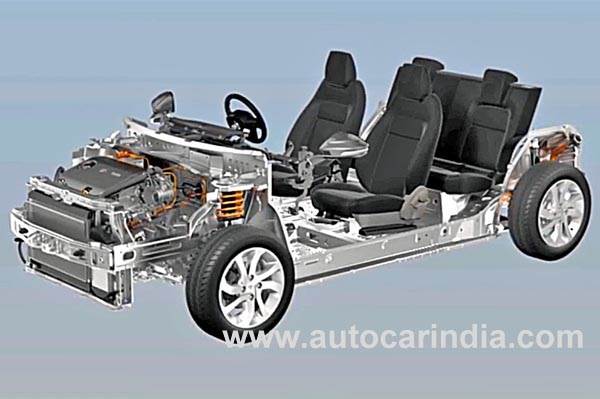Tata Motors, in the not too distant future, will go from its current six platforms to just two. Done to give the company greater economy of scale, both these new platforms will be modular in nature and adaptable enough to build cars and SUVs of different shapes and sizes.
The first of these is called AMP (Advanced Modular Platform). Similar in concept to VW’s MQB, it is made up of 15 individual modules that can be put together to form a complete car. The size is variable too. The floor pan, for example, can be scaled for length, width, track and wheelbase (track and wheelbase each variable by more than 100mm). The first car off this next-generation platform is likely to be in showrooms by 2018 and Tata CEO Guenter Butschek says there are likely to be up to eight individual models produced on this platform.
The list of models includes hatchbacks, sedans, people movers and SUVs. Tata says commonality between the parts will be extremely high - as high as 80 percent - and that key modules like the front and rear axles, powertrains, HVAC modules, etc will contribute to 70 percent of the vehicle cost. Like VW’s MQB, the distance from the firewall to the front-wheel axis will be the only portion that is fixed, and the platform will be able to accept both three-and four-cylinder engines. There will be manual and automatic gearboxes available and the new platform will consist of a flat floor for maximum legroom in the rear.
Tata also claims the weight of the new platform is down a huge 170kg from the current one and this is likely to impact both performance and efficiency. In addition, provision has also been made for hybrid powertrains in future.
The second platform in the portfolio will be based on Land Rover’s L550, the one that currently underpins the Discovery Sport. This larger platform is likely to spawn higher-end vehicles, like the Q501 recently caught testing, and will include larger SUVs and soft-roaders. It is likely to come with the option of four-wheel drive, independent rear suspension and other more sophisticated features like radar-based cruise control.
While Tata insiders say there will be no new body-on-frame platform for now, Tata’s frame- based architecture, seen on the Hexa and updated Safari, is relatively new and, if required, the company will explore synergies with its Commercial Vehicle portfolio which will still use this ‘load-bearing’ architecture in the future .
One thing's for sure though, with AMP, Tata Motors will join an illustrious list of global manufacturers that are now adopting similar modular architectures like VW Group’s (MQB), Toyota (TNGA), etc. What remains to be seen is how effectively Tata can exploit this new platform.



Comments
Member Login
Personal Details
No comments yet. Be the first to comment.